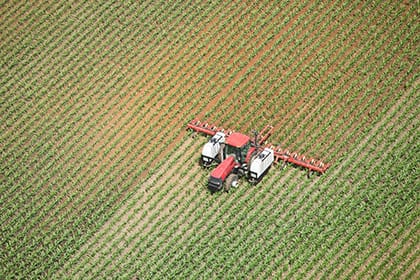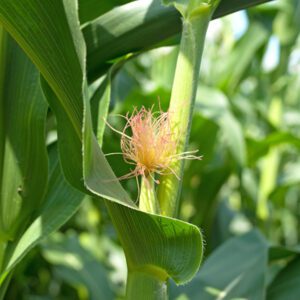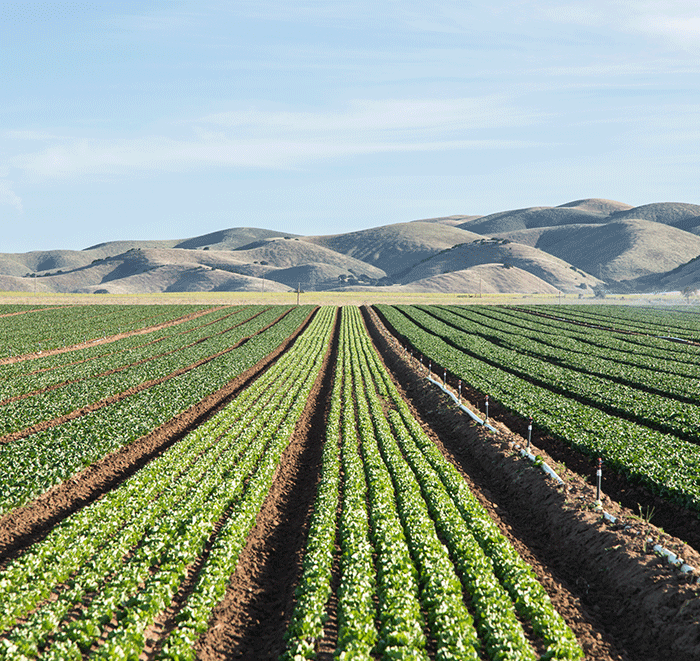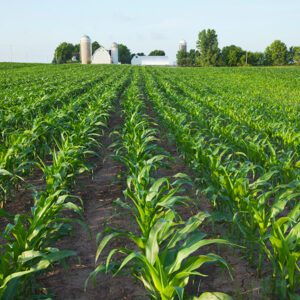

Improve Nitrogen Use Efficiency to Optimize Returns, Minimize Loss
Improve Nitrogen Use Efficiency to Optimize Returns, Minimize Loss
Nitrogen is an essential nutrient for plant growth and development. It is also the costliest nutrient needed for many crops, especially corn. And it is one that can be tricky to manage since it can be lost into the environment, which is both an economic and environmental concern.
“With the fine line of profitability for a grower, it’s imperative to apply just the right amount of nitrogen, at the right time, and incorporate practices that minimize loss and improve plant uptake. Knowledge and careful management can help improve the return on your nitrogen investment and help operations be more sustainable,” said Robb Mohr, Wilbur-Ellis branded nutrition manager.
If you are looking to get more bang for your investment in nitrogen applications, increasing nitrogen use efficiency (NUE) can be a powerful tool, and your local Wilbur-Ellis representative can help.
What is Nitrogen Use Efficiency?
Nitrogen use efficiency is the ratio of crop yield to the amount of nitrogen applied or taken up by the crop.
There are multiple ways to improve NUE, depending on your production practices, yield goals, equipment, crop rotation, soil characteristics (type, pH, soil organic matter, soil water-holding capacity), use of cover crops and overall field history.
“By utilizing everything we know about the past history of a field and its soil type, we can help growers do a better job of using nitrogen to produce a profitable crop,” explained Mohr. For example, if you used legumes as a cover crop in a recent rotation, you may be able to apply less nitrogen, he noted.
“No one strategy fits every farm. I like to look at all factors and take a holistic approach when making recommendations to help ensure the nitrogen applied is used by the crop and not lost,” said Mohr.
Once it is applied, five things can happen to nitrogen. It can be:
- taken up by the plant (which is what we want),
- leached out of the soil,
- volatilized into the atmosphere,
- denitrified and become unavailable to growing plants,
- or it can be lost in surface runoff.
Understand your crop’s needs.
Timing nitrogen application to the stage of development when the crop needs it most is one way that growers can optimize NUE.
“As we think about nitrogen application, it’s important to consider when the crop will need N the most compared to when the N is being applied,” Mohr said. “Ideally, to optimize uptake, we’d spoon feed the crop exactly what it needs when it needs the nitrogen the most, possibly four times: pre-plant, starter, an early-season sidedress application, then maybe a late-season application.”
In the case of corn, a starter fertilizer applied near the row can help with emergence, early-season growth and root development, while producers with irrigation can use fertigation to add nitrogen or other nutrients at key times throughout the growing season.
“Of course, the greatest need is during grain fill, but not everyone is set up to apply starter or has the equipment to apply nitrogen when the crop is close to grain fill,” Mohr said. Many times, all nitrogen for corn is applied in the fall or spring, before planting, leaving it subject to loss before the crop is ready to use it.

Protect your investment.
Because nitrogen is a costly and volatile input, growers should consider protecting their investment with a nitrogen stabilizer. There are a variety of products available to help shield nitrogen sources from leaching, denitrification and volatilization losses such as the NDURE® line of nitrogen stabilizers from Wilbur-Ellis.
Some nitrogen stabilizers contain a single mode of action to reduce one specific form of nitrogen loss, while others are formulated with dual or triple modes of action to reduce multiple forms of loss.
Determining the most efficient nitrogen stabilizer depends on the nitrogen source and the application timing.
Incorporate technology.
Agronomic decisions to maximize NUE across your operation are also becoming more exact thanks to new and more accurate technologies. In-season crop imagery maps collected with drones, satellites and planes help pinpoint nitrogen shortfalls and other nutrient deficiencies or production challenges. With this data, Wilbur-Ellis crop production experts can create prescriptions for variable-rate application of nitrogen, putting on just the right amount where and when a corn crop needs it most. In irrigated fields, supplemental nitrogen can be applied through fertigation. High-clearance applicators equipped with drop tubes are another newer method for applying nitrogen in tall corn nearing ear-fill.
“With all the new technology we have today, we are collecting a lot more granular data from the fields. It all helps us really optimize a grower’s investment in nitrogen and get the most production from every acre,” said Mohr.
“There is not a ‘one-size-fits-all’ recommendation that goes across growers; it’s really about understanding each grower’s operation, what kind of tools they have and what their goal is to optimize NUE,” concluded Mohr.


